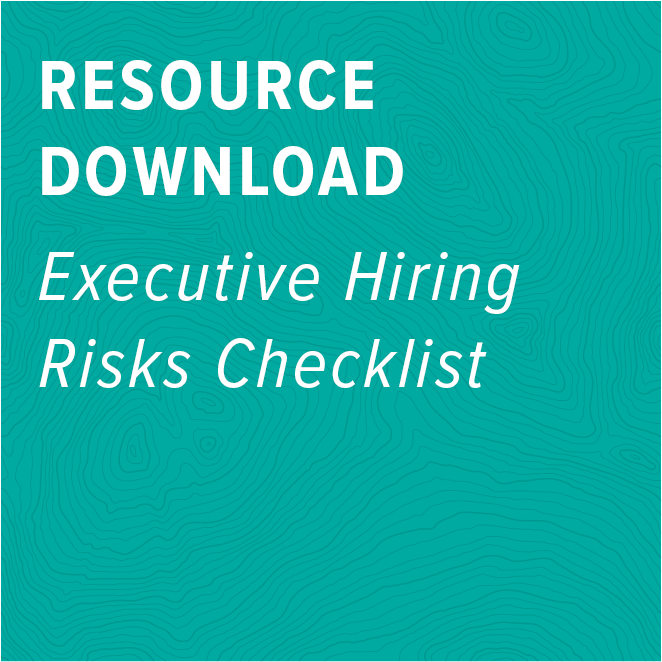
Outsider Competition is Coming: It’s Time for the Outdoor Industry to Consider Topgrading
The outdoor industry is at a crossroads. What market isn’t? It’s hard to ignore the shockwaves moving through any consumer retail sector. Today’s outdoor gear manufacturers have a unique opportunity to once again embrace the direct-to-consumer (DTC) approach to business that has long defined their own roots. But even as outdoors brands are growing while the rest of retail is struggling to keep up, that success is bringing a new wave of challenges to the market. Big competition is looming. The omni channel market is growing. The direct-to-consumer marketplace is evolving. Change is constant.
With the future so fluid, it’s never been more important that your business is prepared to step up and reach for full potential. When you look at your leadership team, are you confident that your organization is ready to meet the challenges ahead? When there’s a gap between where your business is today and where it needs to be tomorrow, that’s where topgrading has a role to play. In simple terms, topgrading means actively looking for the best candidates—even for positions that are already filled within your organization—who already have the skills you need. Topgrading is all about evaluating candidates for a leadership position in your business based on their current ability and how it stacks up against your need. This is opposed to evaluating candidates for their promotability or potential to grow in the future.
If you’ve never considered topgrading as a tool to help you secure the talent your business needs for the next stage, here are three reasons you may start now.
1: Your market is prime for some big competition.
In September 2018, General Motors announced that they were preparing to enter the growing e-bike market. A decade ago, the leading bicycle manufacturers I know may never have guessed they’d be facing competition from one of the country’s biggest automotive conglomerates—but this hardly comes as a surprise today. Energy efficiency is on the public conscience. People are exploring new options for getting from A to B, and there is a lot of money to be made in this space. Success attracts attention.
So what happens when you suddenly find yourself going toe-to-toe with a gorilla of a competitor like GM? This is the sort of change that impacts the way a bicycle manufacturer has to think about their long-term strategy, and that may require new leadership with experience competing on this level. You may not work in the bicycle space, but it’s only a matter of time before the competitive landscape changes for any niche. What do you need in an executive who can help you navigate that changing landscape? Start answering that question, and you’re taking your first steps into topgrading.
2: Your business is changing.
The retail fashion industry is down 4% from 2016 to 2017, but in the same timeframe sports outerwear saw growth of 3.2%. There are plenty of potential reasons for this, but many experts suggest that it’s because of niche outdoors brands who have embraced the DTC model. And that makes sense, doesn’t it? When Yvon Chouinard started making his Lost Arrow pitons, he didn’t wait to build a business plan and pitch to Sears and Roebuck. He sold his gear to the people who were out there climbing right beside him. DTC is in the very DNA of the outdoors industry.
Of course, over the years, our industry has matured and the big brands have learned to speak the language of retail—but we’ve kept that entrepreneurial spirit that leads people to sell stuff out of their garages out of pure passion. Now, today, the industry has a tremendous opportunity with DTC becoming a more and more unavoidable part of manufacturing and selling goods of any kind. But here’s the trick: just as the language of retail was something we had to keep up with, the language of DTC is changing.
Maybe your marketing director is a master of creating breathtaking print ads. They might be a master of store signage, or merchandising, or selling to dealers. But do they understand e-commerce? Do they know enough about SEO to make a splash with Google Shopping? While these disciplines may be new to your business, they are by no means emerging. There are seasoned experts out there who do understand the digital marketplace, and if the future of your business is in DTC online, you need someone who can market your products in DTC online, and do it exceptionally. Full stop.
3. Your goals require different skills and experience.
There’s a big difference between a $10 million and a $50 million company. Or $200 million and $500 million. So what happens when your board tells you they want to see this kind of growth within your organization? It might not make a lot of sense to stick with a good executive who isn’t ready for that challenge—or simply wait for that good executive to move on themselves.
They say you should dress for the job you want, not the one you have. Likewise, the first step to evolving from a $10 million company to a $50 million company is to hire leadership with the skills and experience necessary to successfully run a $50 million company. I’d argue it’s not fair to either party to stick with executives who aren’t prepared for the challenge you’re giving them. There’s no better example of the power of topgrading than this; when you focus on the skills you need, rather than the ones you currently have, you’re preparing yourself to reach your full potential.
Start Reaching for Top Talent
Whatever your reason for exploring topgrading, the strategy comes back to one thing: bench strength. Ours is an industry that’s built by people who love what they do. But that doesn’t always mean we have the right people for the next challenge coming our way. It’s time to think critically about the leadership who holds the future of your company in their hands—are those hands skilled and ready to build the future you’re envisioning?
[su_row][su_column size=”1/2″ center=”no” class=””] [/su_column] [su_column size=”1/2″ center=”no” class=””]
[/su_column] [su_column size=”1/2″ center=”no” class=””]
Executive Hiring Risks Checklist
What are you doing to make sure you land your #1 candidate with each hire? Attracting executive candidates is a process rife with risk—if you don't know how to head that risk off ahead of time. Download our Executive Hiring Risks Checklist to take control of your hiring process and secure your top choice every time.